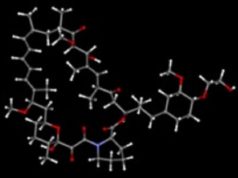
Evan Shlofmitz (Northwell Health, Manhasset, USA) presented the results of the COAP-PCI (Clinical outcomes of atherectomy prior to percutaneous coronary intervention) study at Cardiovascular Research Technologies (CRT) 2017 (18–21 February, Washington, DC, USA). This showed that orbital atherectomy (Diamondback 360, CSI) was non-inferior to rotational atherectomy in terms of lesion preparation prior to percutaneous coronary intervention (PCI). In this interview, he discusses the use of atherectomy in current clinical practice.
What are the current indications for atherectomy?
The two main atherectomy techniques used today for treating de novo lesions are rotational atherectomy and orbital atherectomy. Rotational atherectomy is approved to ablate calcium in coronary lesions with stenoses that can be passed with a guidewire or are ≤25mm in length. Orbital atherectomy is indicated to facilitate stent delivery in patients with coronary artery disease due to de novo, severely calcified coronary artery lesions.
The 2011 American College of Cardiology/American Heart Association/Society for Cardiac Angiography and Interventions guidelines state rotational atherectomy is a reasonable approach for treating heavily calcified lesions that might not be crossed by a balloon or adequately dilated before stent implantation (Class IIa; Level C), but they say that it should not be routinely performed for de novo lesions (Class III; Level A). However, orbital atherectomy was approved after the current guidelines were published.
In practice, atherectomy has traditionally been used as a bailout technique, when a lesion could not be crossed by a balloon, to debulk the lesion prior to stenting. However, there has been a shift in contemporary practice to use atherectomy as an initial treatment strategy once heavily calcified lesions have been identified for the purpose of lesion preparation.
What are the main differences between rotational atherectomy and orbital atherectomy?
There are a number of important technical differences between these two modalities that may account for differences in outcomes. Rotational atherectomy incorporates a diamond-tipped elliptical burr, which spins concentrically as it advances in a forward direction to ablate inelastic plaque, debulking the calcified lesion, resulting in debris with an average size of <5μm. Available crown sizes vary from 1.25mm to 2.5mm. Rotational atherectomy devices are controlled using a console, with activation by a foot pedal.
On the other hand, orbital atherectomy uses a diamond-coated, eccentrically mounted 1.25mm crown that rotates bi-directionally, with the operator controlling the speed of orbit and advancement of the burr with a hand-held console. The procedure uses centrifugal forces to increase the lumen diameter by differential ablation of calcium, changing the compliance of the lesion and creating microparticulate debris with an average size of <2µm. Orbital atherectomy allows for continuous flow of blood during atherectomy, which may contribute to less heat generation with decreased incidence of the no-reflow phenomenon and transient heartblock.
Overall, what data are available for these modalities?
Two randomised trials—ERBAC (Excimer laser, rotational atherectomy, and balloon angioplasty comparison) and ROTAXUS (Rotational atherectomy prior to Taxus stent treatment for complex native coronary artery disease)—and a large meta-analysis (by Bittl et al) have demonstrated outcomes are similar with and without routine use of rotational atherectomy.
Orbital atherectomy was approved based on results from a prospective, non-randomised trial (ORBIT II), which demonstrated that the procedure helped to facilitate stent delivery. A large multicentre retrospective registry was published demonstrating low angiographic complications and 30-day major adverse cardiac events (MACE) with orbital atherectomy in a real-world population (Lee et al). The first randomised clinical trial evaluating orbital atherectomy compared with conventional angioplasty is currently beginning enrolment and will include approximately 2,000 patients (ECLIPSE). COAP-PCI was the first multicentre study to compare the two modalities.
What were the objectives of COAP-PCI?
It was designed to examine the clinical outcomes of patients with calcified coronary artery disease who underwent atherectomy prior to PCI. Using a multicentre, observational registry, procedural and in-hospital outcomes were assessed, with the primary endpoint being in-hospital mortality.
What were the key results?
COAP-PCI demonstrated that orbital atherectomy was non-inferior to rotational atherectomy with a low rate of angiographic complications in both groups. Orbital atherectomy was also associated with significantly decreased in-hospital mortality (0% vs. 1.4%, p=0.039) as well as reduced procedural radiation time (22.1 vs. 27.7 mins, p<0.001) compared with rotational atherectomy.
In your view, which patients would benefit the most from atherectomy?
Atherectomy is an important tool for lesion preparation prior to PCI when calcified coronary disease is present. Increased use of intravascular imaging is important to identify heavily calcified lesions, as it is often underappreciated with angiography alone. Using atherectomy as an initial strategy for lesion preparation once calcified lesions have been identified, is important to ensure adequate stent expansion and optimise PCI results.












